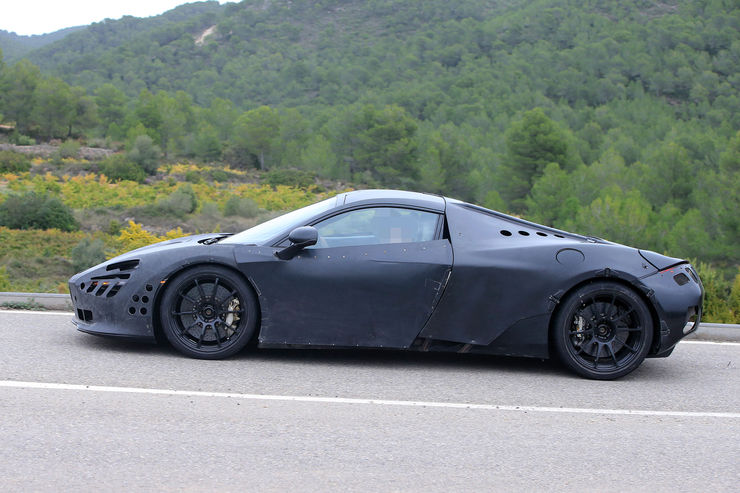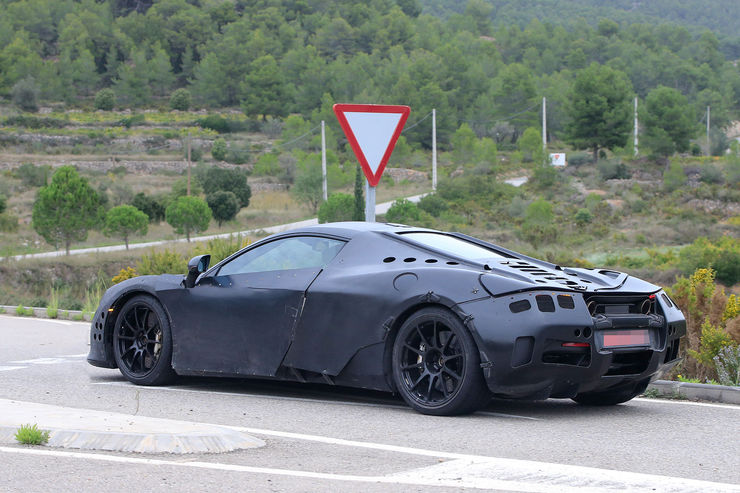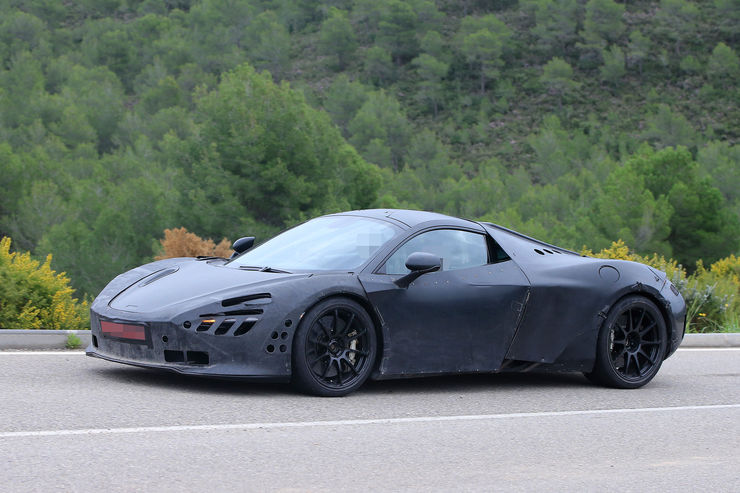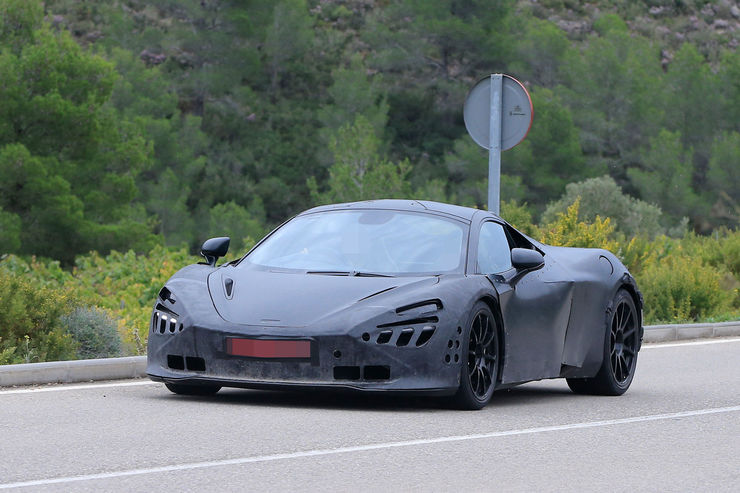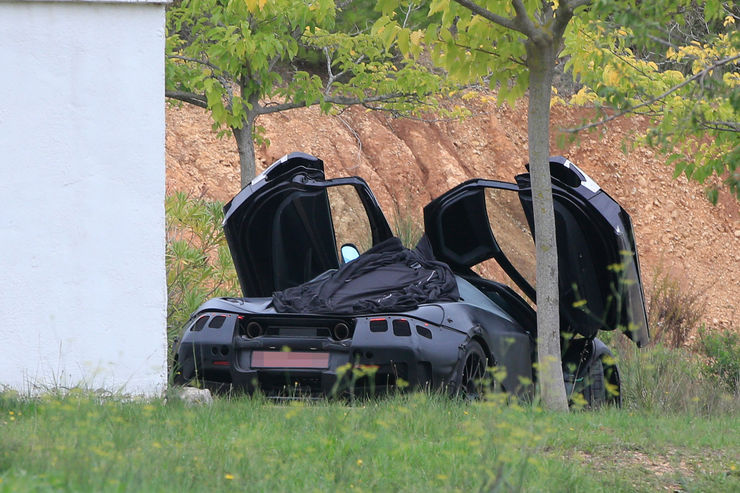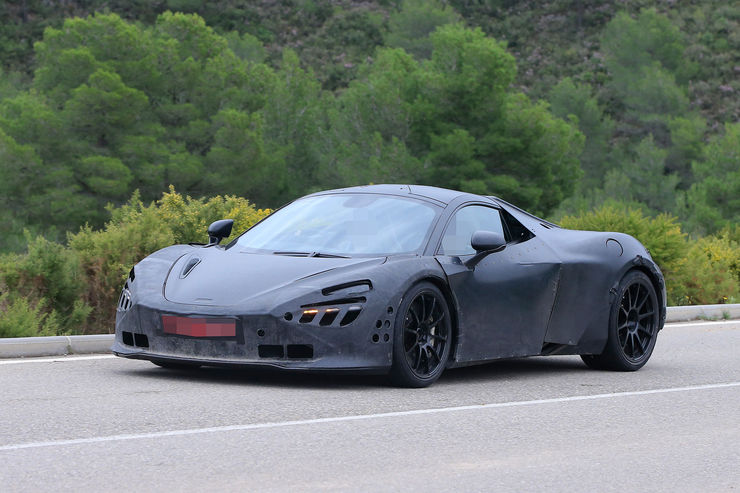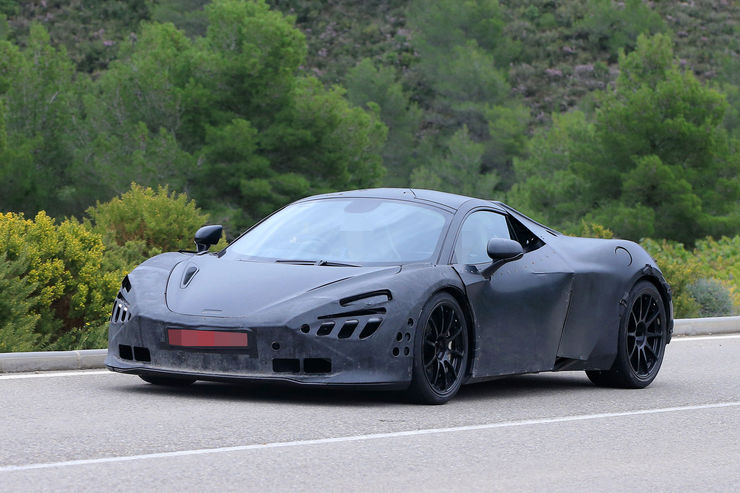Η McLaren έδωσε την φωτογραφία από το σασί της 720S, του αυτοκινήτου που θα αντικαταστήσει την 650S, με την δεύτερη γενιά των Super Series μοντέλων της βρετανικής εταιρίας να παρουσιάζεται επισήμως στην έκθεση της Γενεύης τον Μάρτιο.
Το αυτοκίνητο έχει κωδική ονομασία P14, με το Monocage II σασί να ζυγίζει λιγότερο, αλλά και να έχει αυξημένη αντοχή και ακαμψία. Η P14 θα ζυγίζει 1.283 κιλά χωρίς υγρά, όντας 18 κιλά ελαφρύτερη από την 650S. Θα είναι το πρώτο από τα 15 νέα μοντέλα που ετοιμάζει η εταιρία μέχρι το 2022 και θα προσφέρει ευκολότερη είσοδο και έξοδο στους επιβάτες της. Η McLaren συνεχίζει πως το νέο της μοντέλο θα παρέχει άριστη ορατότητα, ενώ με αυτό θα μπορεί κάποιος να κυκλοφορεί σε καθημερινή βάση. Στον πρόσθετο εξοπλισμό θα υπάρχει το “Visible Monocage” με τον οδηγό να βλέπει το carbon από τις μπροστά κολόνες.

Μηχανικά η McLaren δεν επιβεβαίωσε τι κινητήρας θα βρίσκεται στο κέντρο του αυτοκινήτου, αλλά οι φήμες θέλουν τον γνώριμο V8 3,8-λίτρων κινητήρα να δίνει την θέση του σε έναν V8 4,0-λίτρων biturbo κινητήρα, ο οποίος αργότερα θα προσφέρεται και με υβριδική τεχνολογία. Η 720S θα κάνε τα 0-100 χλμ/ώρα σε λιγότερο από 3 δευτερόλεπτα, με την τελική ταχύτητα να ξεπερνά τα 330 χλμ/ώρα.

Σύμφωνα με τον αρχισχεδιαστή της McLaren, Frank Stephenson, η P14 θα έχει “ακόμη πιο τρελό σχεδιασμό” από την P1, διατηρώντας τη γνώριμη σχεδίαση του εμπρός προφυλακτήρα και τις πλευρικές εισαγωγές αέρα.
Στο εσωτερικό θα συναντάμε ψηφιακό πίνακα οργάνων, ο οποίος θα αλλάζει modes, αναλόγως του προγράμματος που έχει επιλέξει ο οδηγός (χρήση εντός πίστας, cruising, κτλ). Το μοντέλο εκτός από coupe θα είναι διαθέσιμο και σε ανοικτή Spider έκδοση, που θα παρουσιαστεί έναν χρόνο μετά, με την τιμή των μοντέλων να είναι αυξημένη σε σχέση με αυτή των 650S. Ενημερωτικά, ήδη η McLaren έχει πουλήσει αρκετές μονάδες της 720S στους καλούς της πελάτες, οι οποίοι το έχουν δει σε μια ιδιωτική εκδήλωση που διοργάνωσε η εταιρία.
[learn_more caption=”Δελτίο Τύπου”]McLAREN AUTOMOTIVE ANNOUNCES SECOND-GENERATION SUPER SERIES, THE NEW CORE OF THE McLAREN BRAND
- New McLaren supercar will debut on March 7 at the 87th Geneva International Motor Show
- Second generation of the Super Series is McLaren Automotive’s first-ever replacement of a product family and the first of the 15 new cars defined in the company’s Track22 Business Plan
- New carbon fibre Monocage II body structure delivers extreme strength and contributes to the car’s light weight
A new era will begin for McLaren Automotive this March with the launch of the second generation of its Super Series at the 87th Geneva International Motor Show. The first of the 15 new cars cited in the company’s Track22 Business Plan, the second-generation Super Series is also the first replacement of a product family by the British manufacturer of luxury sports and supercars.
“Super Series is the core of the McLaren business and personifies the blend of extreme performance, crafted luxury and unparalleled driver involvement that is the McLaren heartland,” explained McLaren Automotive CEO, Mike Flewitt. “This is the first time we have replaced a product family and the new Super Series will be absolutely true to McLaren’s pioneering spirit in being a revolutionary leap forwards, both for our brand and the supercar segment.”
The new Super Series is created around an ultra-lightweight, carbon fibre central structure. Immensely rigid, yet weighing less than the carbon fibre and metal cockpit architecture of the first-generation Super Series, the Monocage II contributes to a lightest dry weight of just 1,283kg for the new car – lower than the closest competitor and 18kg lighter than a McLaren 650S with comparable specification.
The development of Monocage II has allowed McLaren to incorporate a wider cabin entrance and lower sill to improve access into a driver environment that will offer excellent all-round visibility. The new chassis structure also enables a lower centre of gravity, further sharpening the dynamic performance of the new Super Series. Owners wishing to showcase the carbon-fibre construction chassis can specify a ‘Visible Monocage’ option that exposes the material on the inside area of the A-pillar.
The Super Series lineage began in 2011 with the launch of the groundbreaking 12C. The 12C Spider followed in 2012 and in 2014 McLaren introduced the 650S Coupé and 650S Spider. The first generation of the McLaren Super Series was further expanded in 2015 with the launch of the limited edition 675LT Coupé and 675LT Spider.
Full details of the new, second-generation Super Series will be confirmed in March, when further images and pricing will also be available.
Ends
Notes to Editors:
A selection of high resolution images accompanying this release is available to download from the McLaren Automotive media site – cars.mclaren.press.
About McLaren Automotive:
McLaren Automotive is a British manufacturer of luxury, high-performance sports and super cars, located at the McLaren Technology Centre (MTC) in Woking, Surrey. For the past 30 years, McLaren has pioneered the use of carbon fibre in vehicle production and since introducing a carbon chassis into racing and road cars with the 1981 McLaren MP4/1 and 1993 McLaren F1 respectively, McLaren has not built a car without a carbon fibre chassis.
Following the global launch of McLaren Automotive in 2010, the groundbreaking 12C was revealed in 2011, the 12C Spider in 2012, and the limited-run McLaren P1™ went into production in 2013. In keeping with its plan to introduce a new model each year, the company unveiled the 650S, in Coupé and Spider form in 2014, while 2015 proved to be a year of unprecedented growth of the product portfolio with five new models launched across the full range. The strictly limited edition 675LT Coupé premiered at the Geneva Motor Show alongside the track-only McLaren P1™ GTR which, with 1,000PS, became the most powerful model ever produced by the brand. The much-anticipated Sports Series became the third – and final – model tier in the McLaren range with the 570S Coupé and 540C Coupé debuting in New York and Shanghai respectively, less than one month apart. The end of 2015 saw the launch of the fifth model, the 675LT Spider, which was as a direct response to customer demand. The year also saw the end of production for the first model in the Ultimate Series as the 375th McLaren P1™ was completed, closing what had become a defining year for the British brand. 2016 continued where 2015 had left off with the introduction of the 570GT – a second bodystyle for the Sports Series and the most luxurious car McLaren has ever built, as well as the 570S GT4 and 570S Sprint track variants. 2016 also marked the introduction of the company’s new business plan, Track22, which sees the company investing £1B in Research and Development to deliver 15 all new cars or derivatives by the end of 2022, of which at least 50% will feature hybrid technology. The uplift in sales in 2016 also saw the launch of the second shift at the McLaren Production Centre as well as the company’s third year of profitability in just six years of trading.
McLaren Automotive Partners
To support the development, engineering and manufacture of its range of innovative and highly acclaimed sports cars, McLaren Automotive has partnered with world leading companies to provide specialist expertise and technology including, AkzoNobel, ExxonMobil, Pirelli and SAP.
Visit cars.mclaren.com for more details.
[/learn_more]

